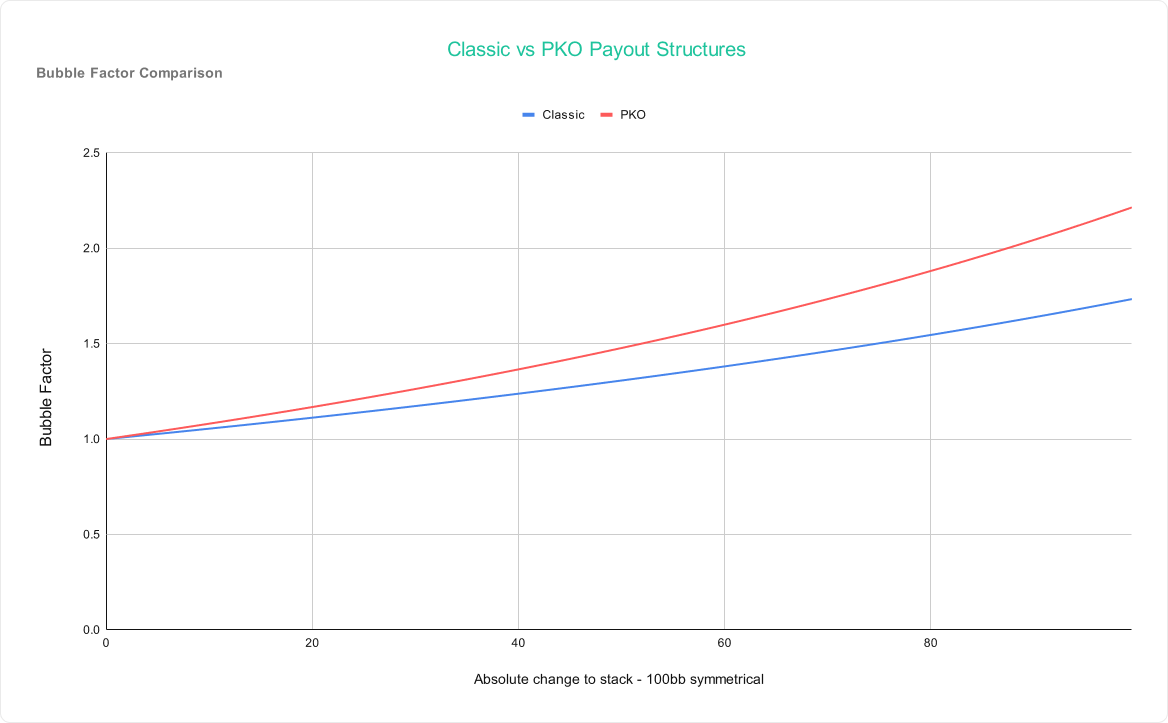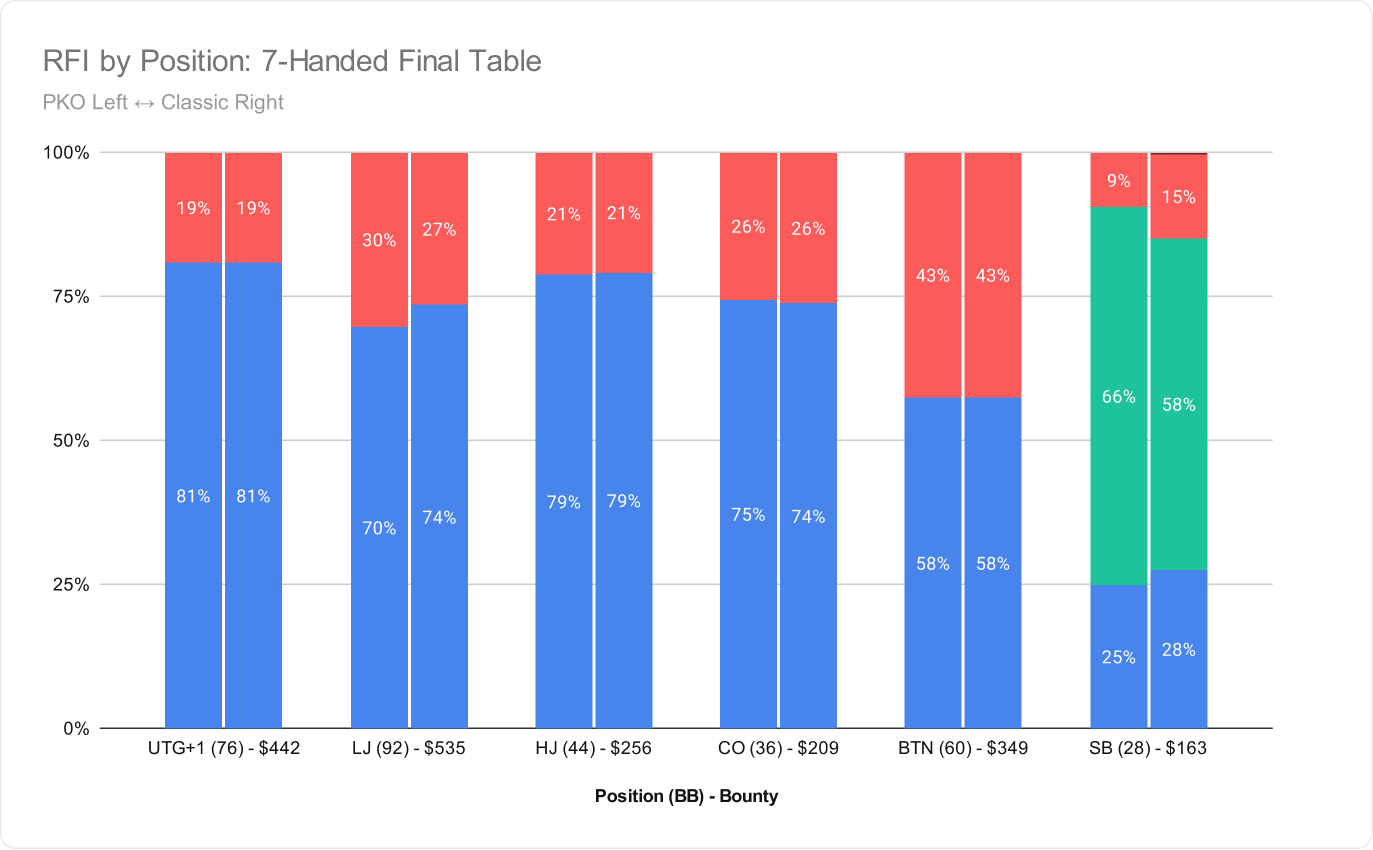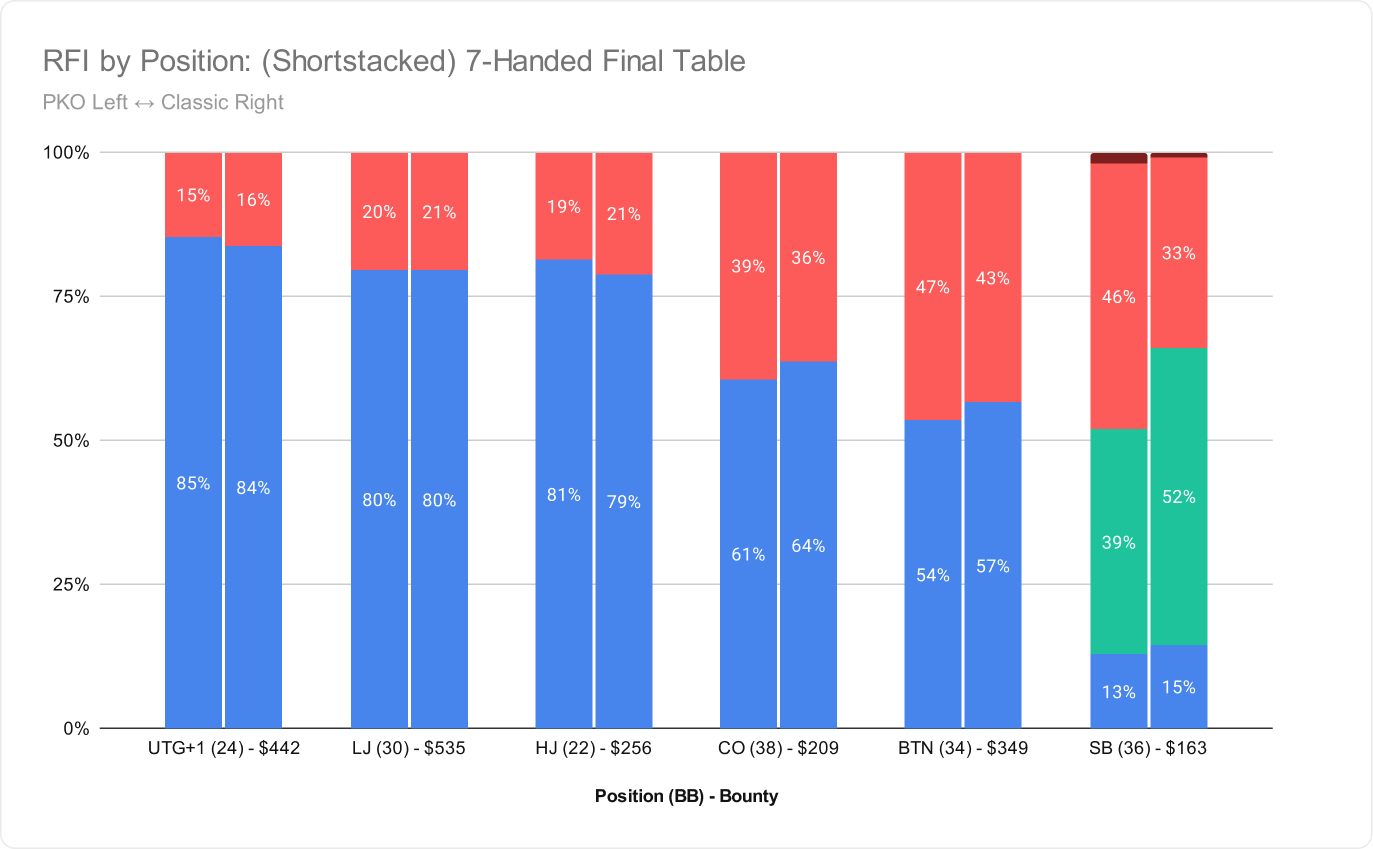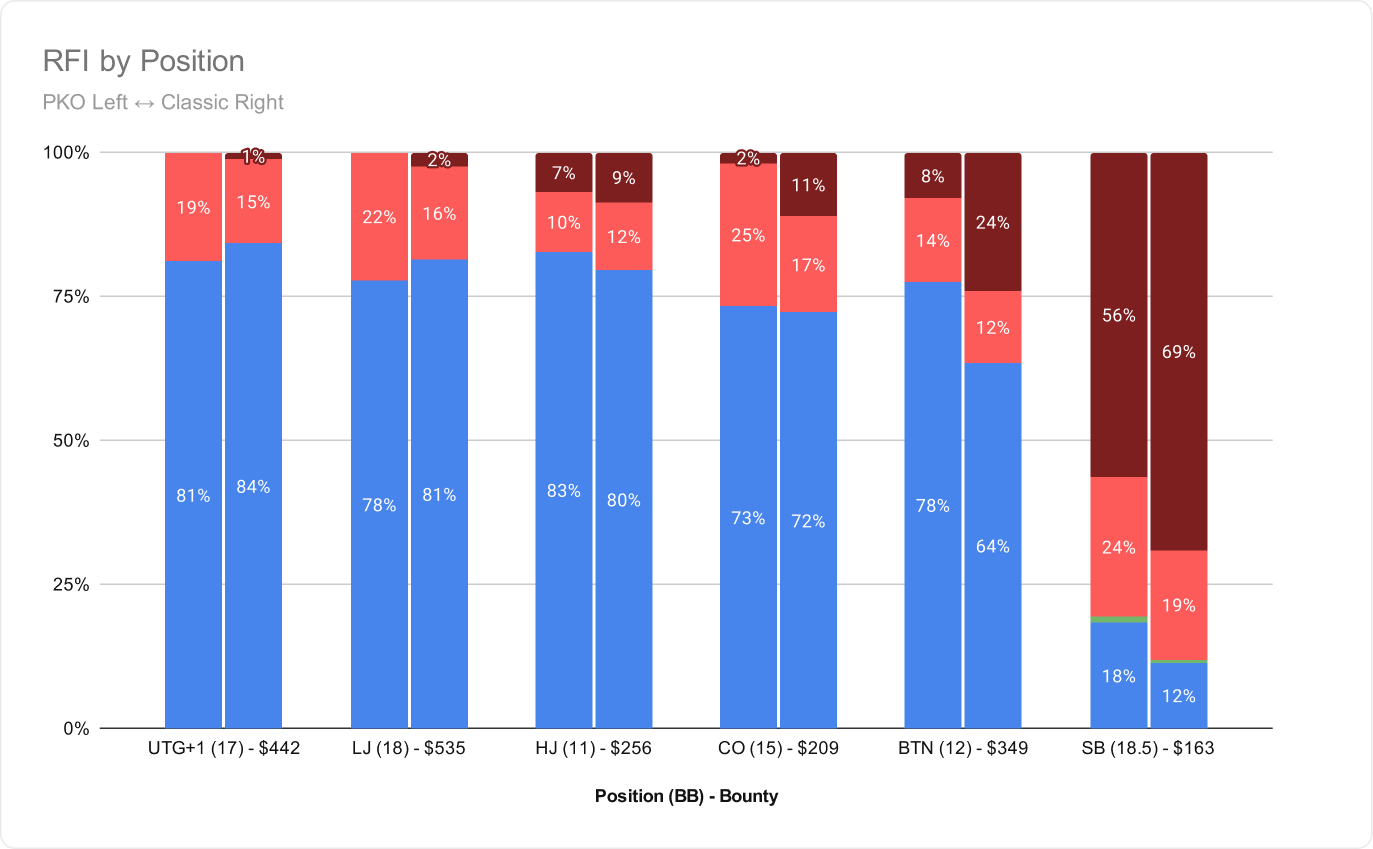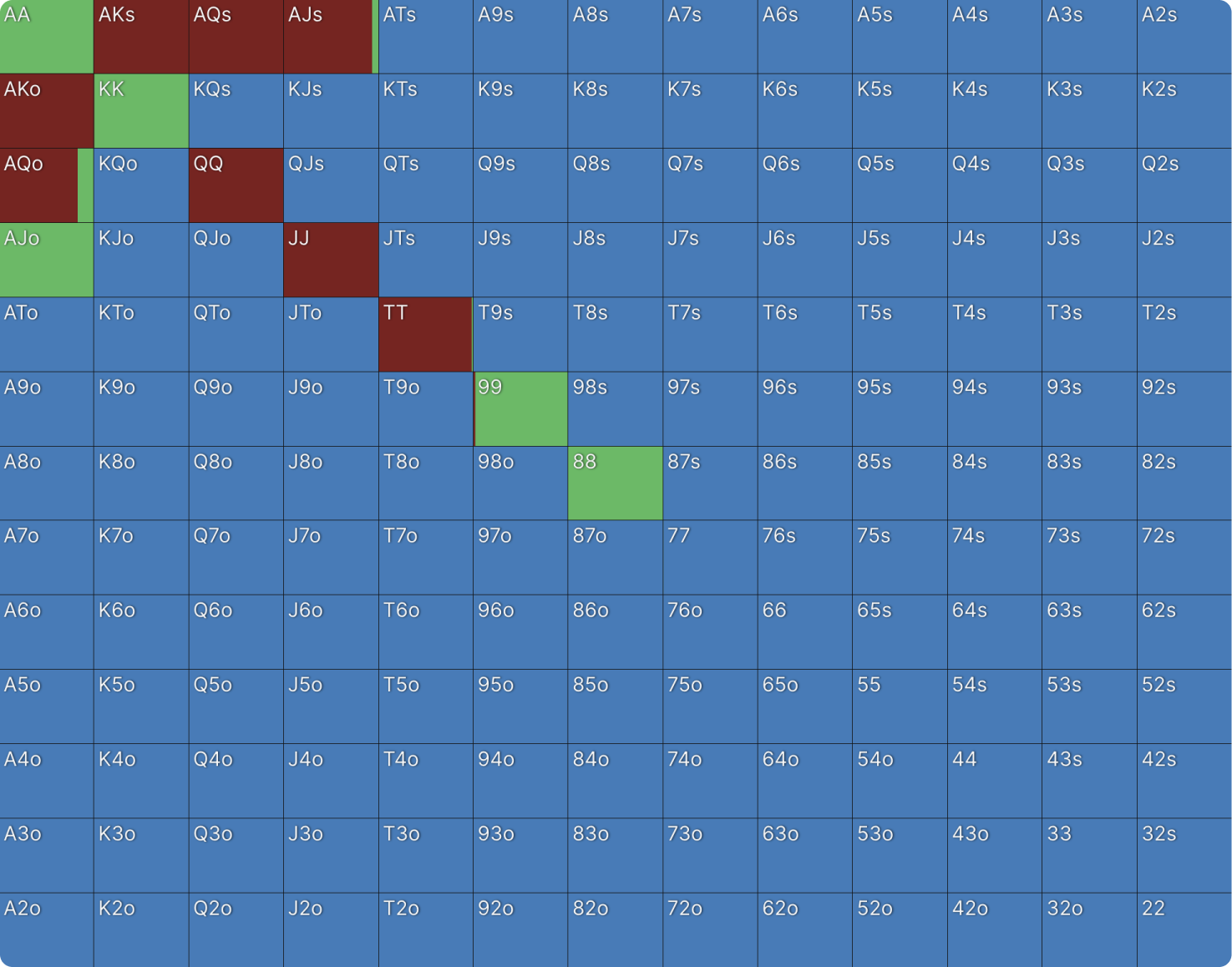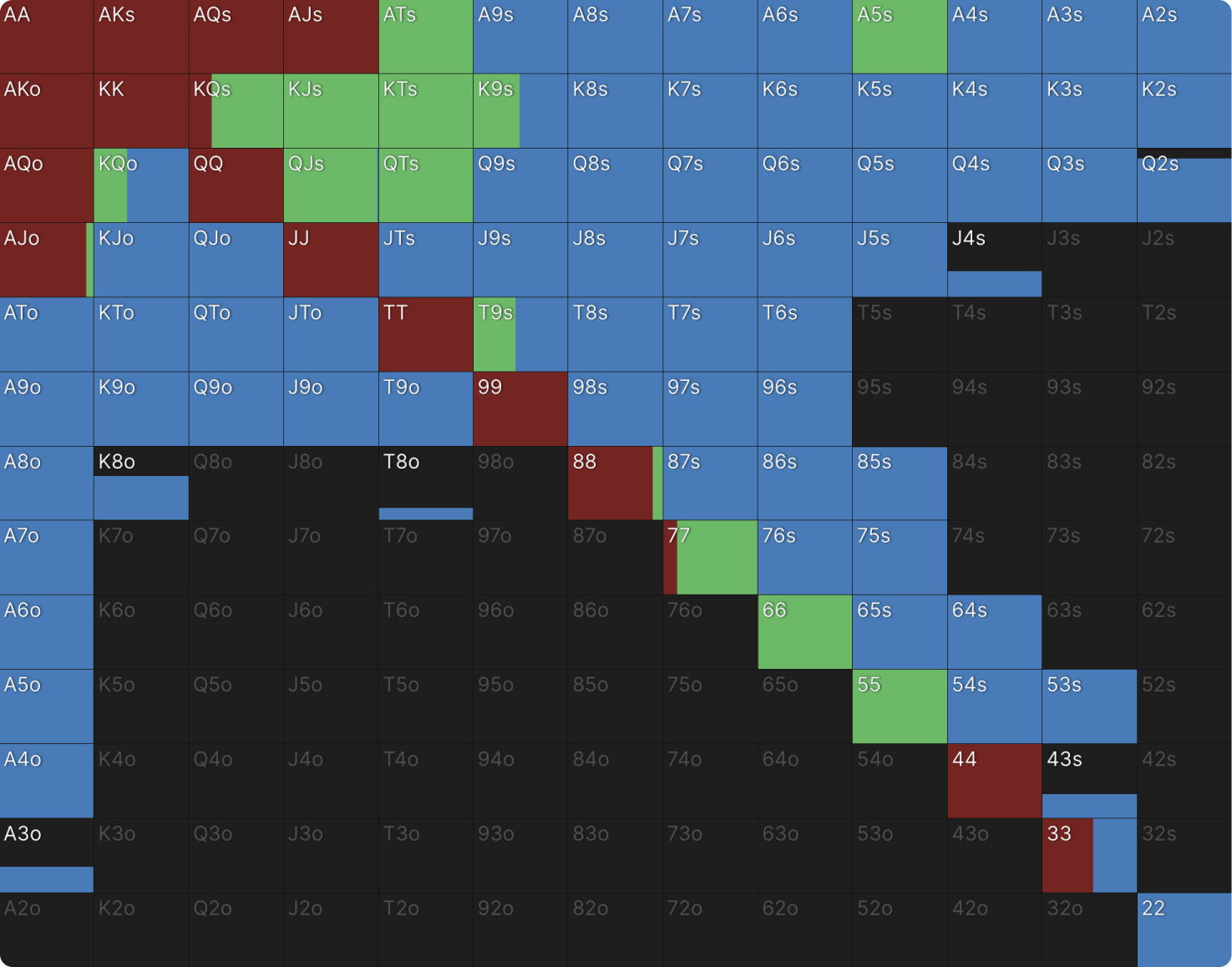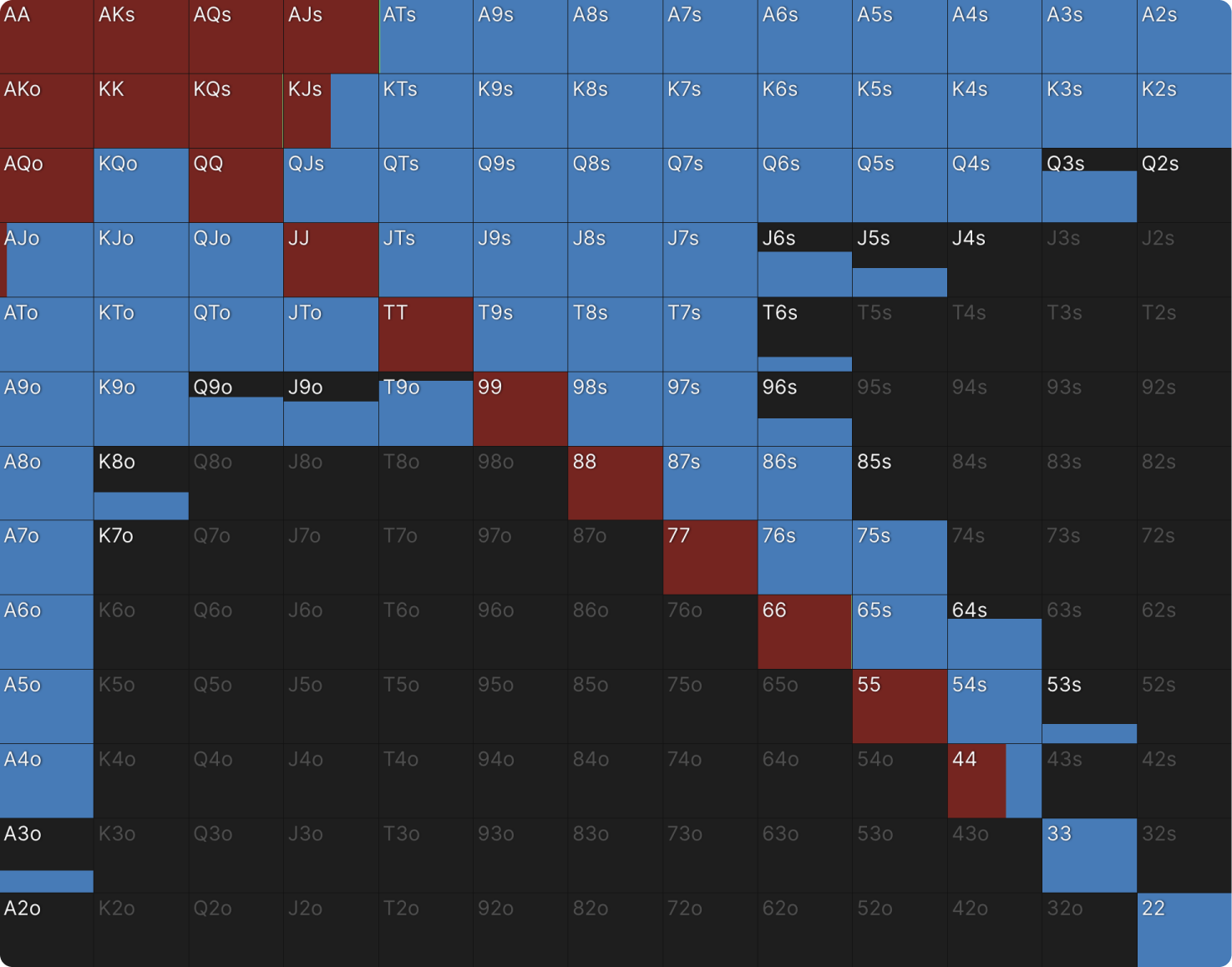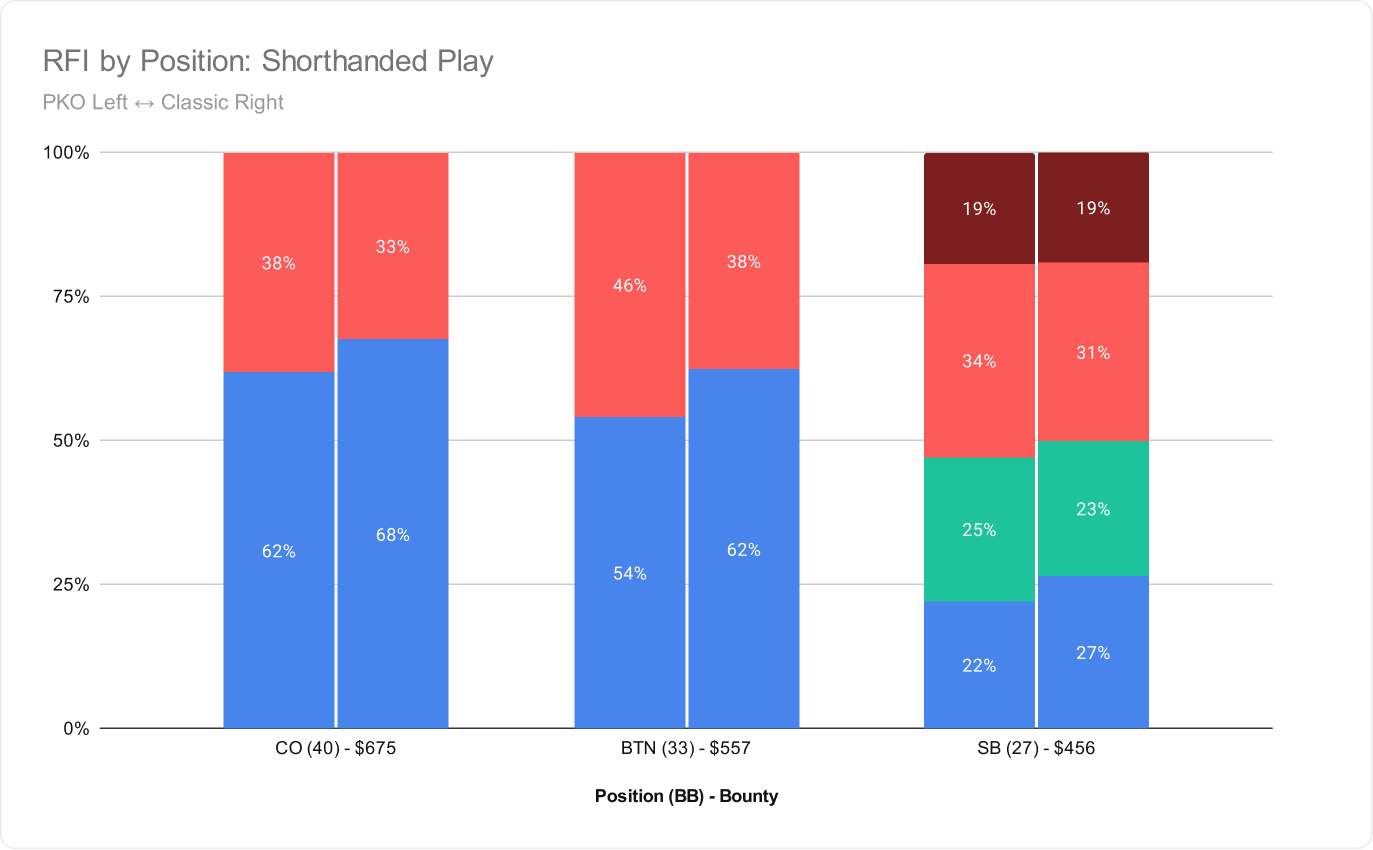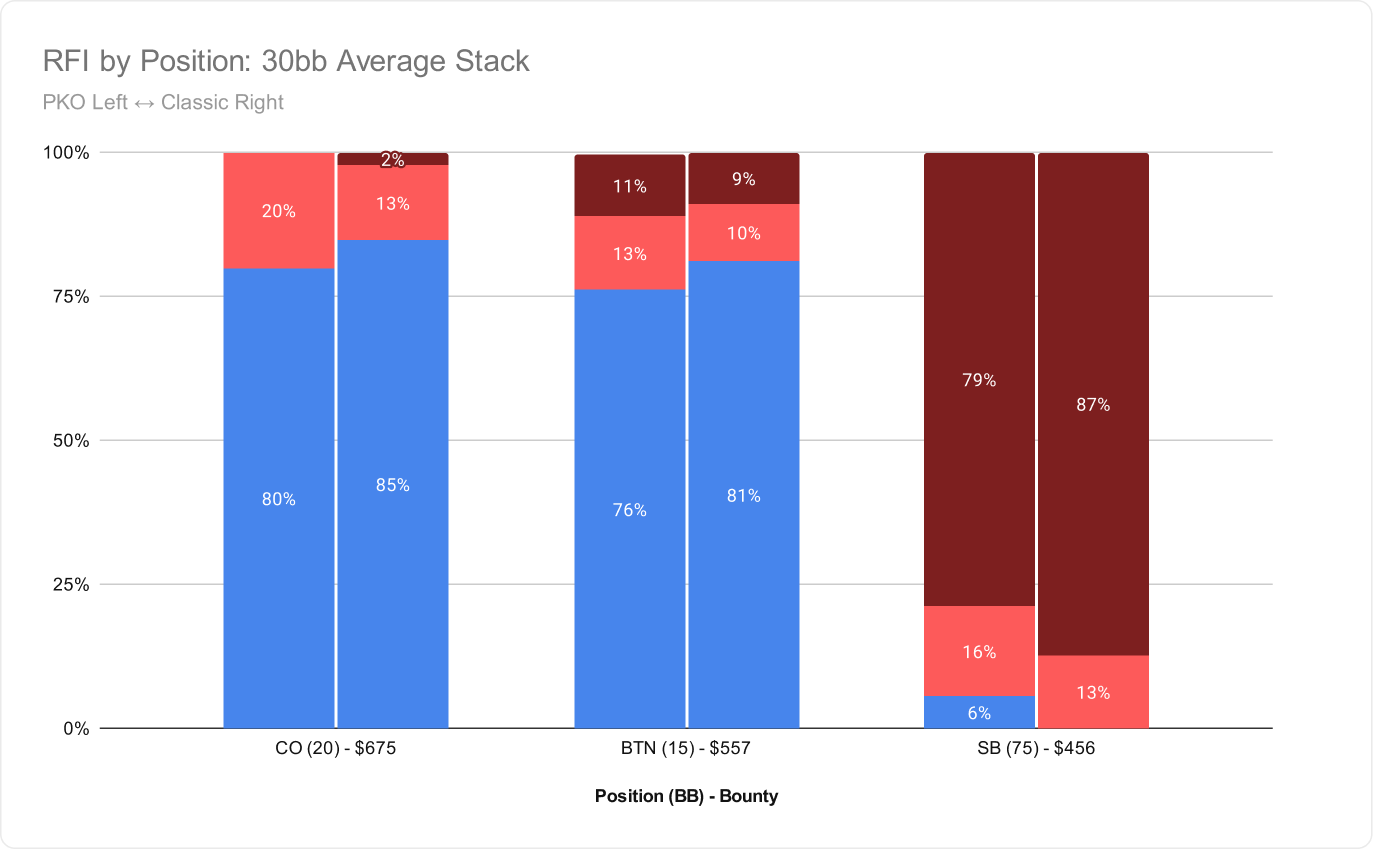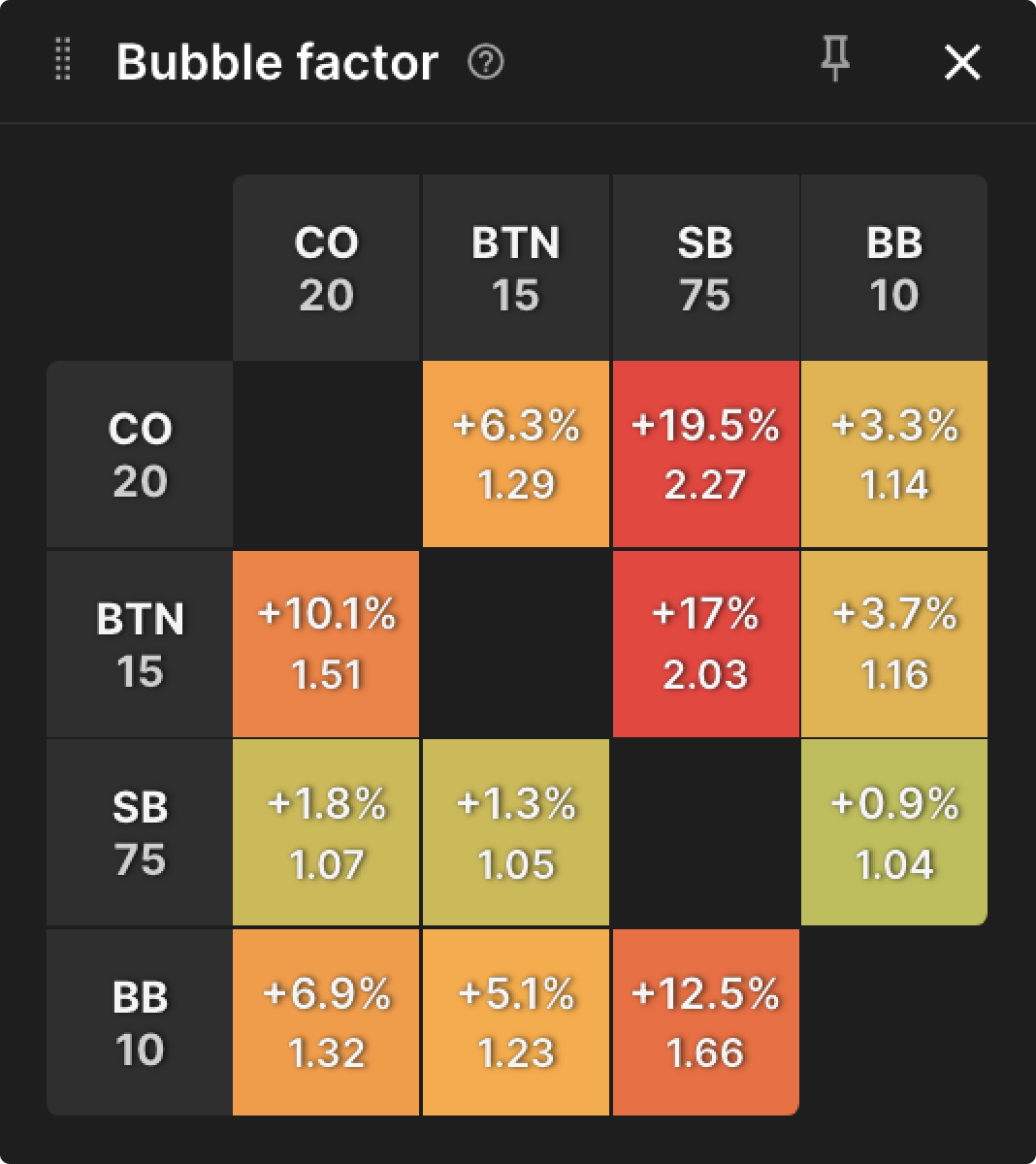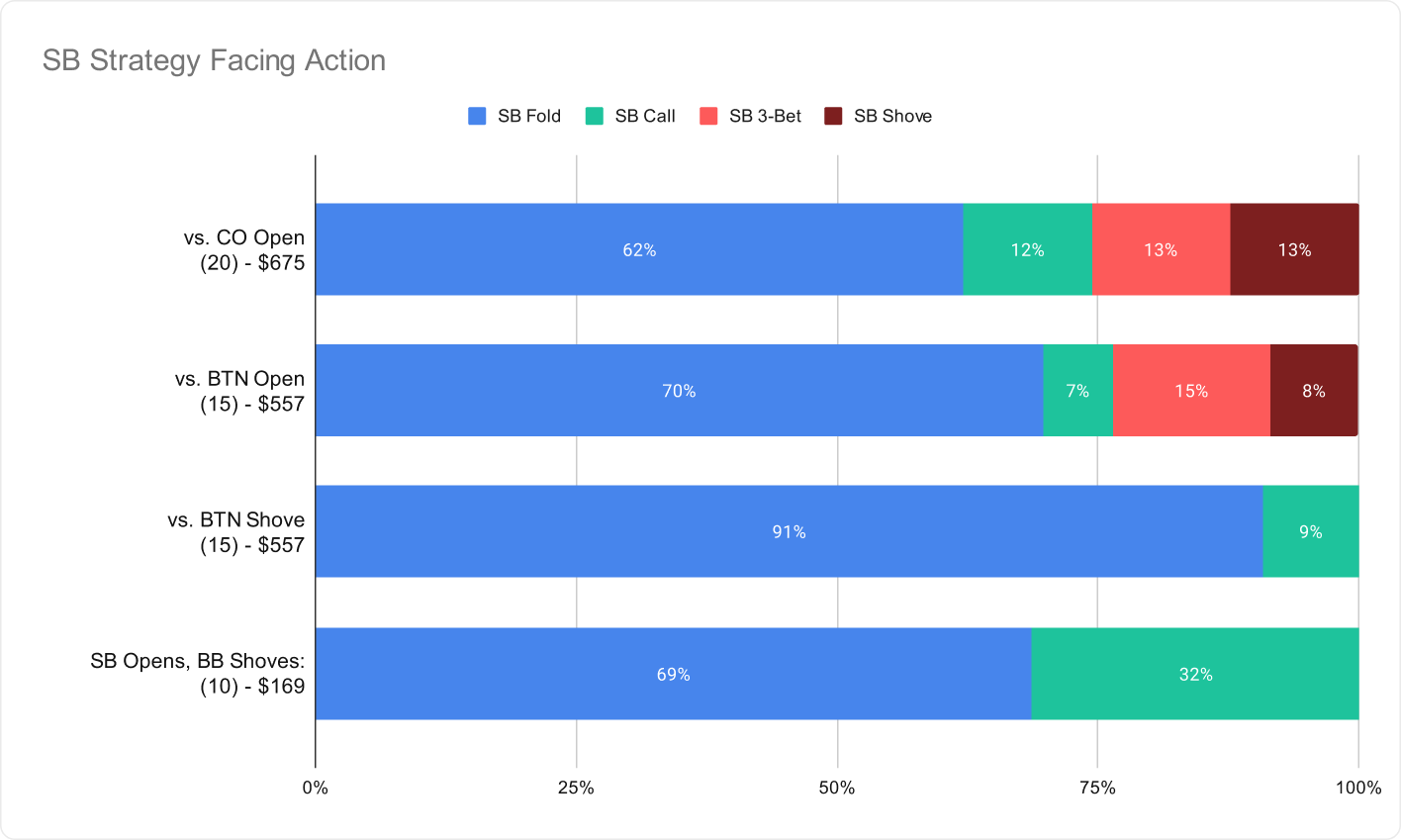Mastering PKO Final Tables

Final tables can be the most exciting and rewarding phase of a tournament, and being able to convert these final tables into wins is crucial to our overall results as poker players. This is especially true for Progressive Knockout (PKO) final tables, where we find both big pay jumps and big bounties.
So how do we maximize our return at these PKO final tables while avoiding taking unnecessary risks and giving ourselves the best chance to capture bounties? Today we’ll be looking at how PKO final tables compare to Classic final tables, and how our strategy changes between these two formats.
Payout Structure Differences
Before we discuss the strategic differences between PKO and Classic final tables, we need to understand the impacts of payouts on our risk premium in each format. Here is a comparison of the payouts used in GTO Wizard for PKO and Classic games:
The PKO payout structure is flatter, with first and second place being paid identical amounts from the prize pool. This is because the winner of a PKO tournament earns their own bounty and that of their opponent, which will often represent a significant addition to the final prize.
The flatter payout structure in PKO tournaments leads to higher risk premiums in a vacuum. This higher bubble factor is mitigated by the effect of bounty power on our ranges. Let’s examine how these two competing factors interact on the final table.
Before we discuss the strategic differences between PKO and Classic final tables, we need to understand the impacts of payouts on our risk premium in each format. Here is a comparison of the payouts used in GTO Wizard for PKO and Classic games:
The PKO payout structure is flatter, with first and second place being paid identical amounts from the prize pool. This is because the winner of a PKO tournament earns their own bounty and that of their opponent, which will often represent a significant addition to the final prize.
The flatter payout structure in PKO tournaments leads to higher risk premiums in a vacuum. This higher bubble factor is mitigated by the effect of bounty power on our ranges. Let’s examine how these two competing factors interact on the final table.
Without considering bounties, the higher bubble factors involved in PKO final tables lead to higher risk premiums.
Bubble Factors in PKOs
Below are two graphs comparing the bubble factors in PKO and Classic final tables based on relative stack depth. In the first graph, we have removed the effects of bounties to emphasize the impact of payouts on our strategy.
As we noted earlier, flatter payout structure in PKOs results in higher bubble factors in a vacuum. Now let’s add the bounties back in and see what happens.
The drop at the end represents the point where stacks are fully invested, and we have the opportunity to win a bounty, at which point the bubble factor drops below 1. What this tells us, is that the chips you risk on the final table of a PKO are far more valuable than the chips you stand to gain. This holds true up until you risk enough to play for bounties.
Of course, this is purely hypothetical as any real world final table would have uneven stack distributions. Despite this, it’s important to note the limited effect of bounties on final tables. The next question to ask is how do these bubble factors impact our overall strategy when it comes to constructing PKO final table ranges. Let’s take a look at our Raise First In (RFI) ranges at a few different stack depths to find out.
PKO and Classic Range Comparisons
Below are three RFI ranges pulled from identical PKO and Classic 7-handed final table solutions from the GTO Wizard library.
In our first example, with a 60 big blind average stack depth there is little to no difference between our opening ranges by position. The primary difference is in small blind’s Limp First In (LFI) and RFI ranges when covered by the big blind, who has 83 big blinds. You can view these ranges in the links below:
Next, let’s explore how stack depth impacts our strategy.
In this second example, we see the impacts of shallower stacks on our strategy. With average stacks at 30 big blinds, our strategy starts to diverge in a PKO with more raising in the Cut off (CO), Button (BTN) and Small Blind (SB). The primary difference in this example is the big blind is now covered, so the later position players have access to their bounty. Even so, only the small blind expands their RFI range significantly by exchanging limps for opens. In contrast, the CO, who covers all players left to act, opens only 3% more hands.
The following chart shows how the opening strategy changes when players are shorter stacked:
You can view these ranges in the links below:
Finally, let’s look at a short stack example where the full table is under 20bb.
There are a few exciting things to note in this example:
- There is significantly less opening all-in in a PKO at shallow depths.
- The short stack in the Hijack (HJ) has a similar strategy in both a PKO and Classic FT spot, playing slightly tighter in the PKO.
- Despite being chip lead, the Small Blind (SB) opens fewer hands in the PKO example.
- There is more raising versus shoving from all mid and late positions in the PKO example, even for the SB.
You can view these ranges in the links below:
The takeaway from these three examples are:
- Risk premiums do not increase or decrease based on overall stack depth at a final table.
- Bubble factors are lower in PKOs for all players, but significantly lower for covering players.
- Despite these lower bubble factors, ranges are similar at both PKO and Classic final tables.
While risk premiums are lower at PKO final tables this does not significantly affect our RFI ranges when comparing them to Classic final tables.
Calling Ranges
Now that we understand how we play first to act, let’s look at what happens when responding to a previous player’s actions. Below is an example of calling a covered player in a PKO versus Classic scenario:
We can see that when covering an all-in player with one other player left to act, the button is re-shoving a nearly identical percentage of hands, but calling more often. In the PKO example, we see more pocket pairs re-shoving and the addition of AT into their range. This is because the button wants to fold out SB’s overcards with their middle pairs, while still having the opportunity to collect HJ’s bounty with a wider range. BTN can still get away from the bottom of their range in this example (e.g. 77, ATo, AJo) if SB re-shoves, while protecting those hands with their premium pocket pairs.
The general rule in PKOs when calling all-ins with covering players left to act is to balance your calling range with the top and bottom of your range while maximizing fold equity with your middle pairs and strong ace hands.
Let’s look at how wide a chip lead gets to play when facing a 3-bet at a deeper stacked table in a PKO versus Classic final table.
Now we see a much bigger contrast between strategies! In both examples we’re fast playing our best hands, but in the PKO as chip lead we don’t mind going postflop with hands that play well post. Pocket fours and threes benefit from the big stack’s fold equity, while helping to balance their otherwise premium heavy 4-bet range. In both examples we can see:
- As a covering player we can flat both all-in and Non All-in (NAI) 3-bets.
- When calling NAI 3-bets we use the portion of our range that plays well post.
- We don’t trap with the top of our range when a 3-better is pot committed.
Short Handed Play
Finally, let’s look at what happens once final tables get short handed. In the example below there are four players remaining with 30 big blind average stacks that are close to one another.
In this instance there is a relatively small difference of 0.3 between the small blind’s bubble factor when playing against the big blind. You can view these ranges in the links below:
For comparison purposes, here’s a 30 big blind average stack example with a definite chip leader.
Let’s look at the chip lead’s bubble factors for an explanation as to why their range is so wide in our PKO example.
We can see the chip lead has a huge incentive to play a wide range here as we would suspect, but the interesting thing is they play an even wider range in the Classic solution. The chip lead can apply an immense amount of pressure on the short stack with no risk to themselves as losing a pot would not impact their overall tournament position.
You might notice that in the PKO solution, the bubble factor is below 1 when playing against the other positions. It’s worth looking at how these negative risk premiums impact the small blind’s response to actions from the rest of the table:
The following chart shows how SB responds facing action at a 4-handed final PKO table:
A few notes on the table above:
- Despite the negative risk premiums, the chip lead is folding the majority of hands versus CO and BTN opens.
- When shoved on by the BTN or BB the SB still folds a decent amount. In the case of a BTN shove we’re folding all our aces below AT, all our unpaired hands without an ace except KQ suited, and all our pocket pairs below 66.
- The SB has a non-all-in 3-bet range versus CO and BTN, the bottom of which folds to 4-bets.
- The SB raises/folds a portion of their trash hands versus BB to balance their premiums.
Even as the big stack at a short-handed PKO final table, we play a relatively tight range versus our short stacked opponents when facing all-ins.
You can view these ranges in the links below:
Conclusion
Any final table represents the highest risk and reward when compared to other tournament stages. The important question to ask when faced with final table decisions is how do we best maximize these rewards while mitigating our risks?
In PKO tournaments specifically, we have seen that the approach we take in selecting our opening and calling ranges is still closely aligned with our approach to Classic final tables. Even with the added equity from bounties of covered players, we still apply a disciplined approach when facing aggression.
Key Takeaways

Any final table represents the highest risk and reward when compared to other tournament stages. The important question to ask when faced with final table decisions is how do we best maximize these rewards while mitigating our risks?
In PKO tournaments specifically, we have seen that the approach we take in selecting our opening and calling ranges is still closely aligned with our approach to Classic final tables. Even with the added equity from bounties of covered players, we still apply a disciplined approach when facing aggression.
Key Takeaways
- When calling all-ins with covering players left to act we balance our calling ranges with the top and bottom of our range, while maximizing fold equity with your middle pairs and strong ace hands.
- Even as the big stack at a short-handed PKO final table, we play a relatively tight range versus our short-stacked opponents when facing all-ins.
- Bounties make up for the higher risk premiums associated with a PKO’s flat payout structure at an FT, but not enough to significantly change our range when compared to a standard non-PKO range.

Author
JonnyLaw
John Lawford AKA “JonnyLaw” is a mid stakes online MTT regular with a passion for the Progressive Knockout format.

